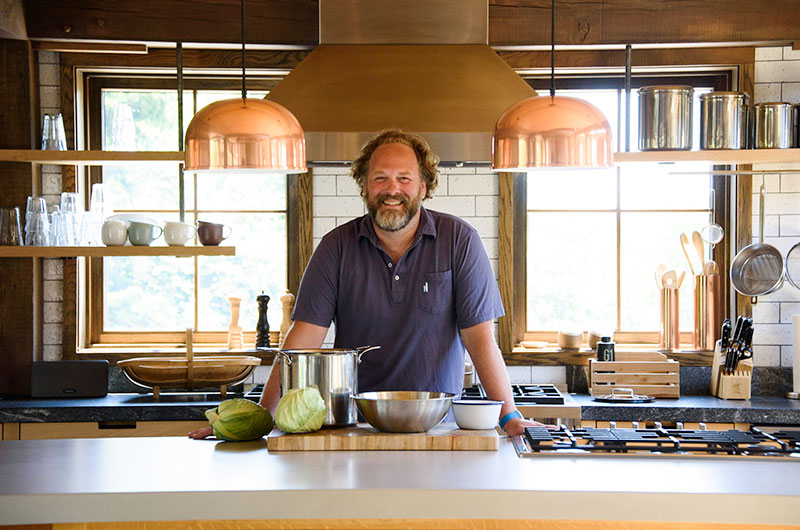Q. I’d like to serve a standing rib roast for my holiday dinner this year. What should I look for when I’m shopping or what should I ask the butcher for? I’ve heard that one part of the roast is better than the other. Is that true? How much should I buy to feed my crowd?
A. I always keep a few things in mind when shopping for a great rib roast. First off, I want to make sure the roast is either grass-fed or grain-fed certified prime or choice. Grass- vs. grain-fed beef is a personal choice; I see them as completely different products. Grass-fed will be very lean but will have delicious flavor. The grain-fed beef will have much more intra-muscular fat and will always be a crowd pleaser. I also prefer a roast from closer to the front or chuck end of the cow — once again to get as much delicious fat marbling as possible. (The front end might also be called the first three ribs.)
If I'm really going for broke, I'm going to want that beef to be well aged as well. It's more expensive, but the funk and tenderness you get from a little fermentation makes a world of difference!
In general, I allot 3/4 of a pound per person to account for the weight of the bones in the roast.
Q. What do I need to do to prepare the roast for cooking? Do I need to season it far in advance? Is a simple salt and pepper rub all that I need or is there something jazzier I should do? How far in advance should I take it out of the fridge?
A. In general if I have good meat on hand I do very little to the roast. With any meat the size of a rib roast I will salt it well in advance to make sure the salt penetrates past the surface of the roast. This can be done three to four hours ahead of time or even the night before. More often than not, a simple salt-and-pepper approach is my go-to for beef. But if you want to get a little fancier, you can incorporate rosemary or other herb sprigs. When you buy your rib roast, ask the butcher to cut the roast away from the bones – and then tie the roast back on to the bones. This makes carving easier and it also gives you an opportunity to tuck rosemary or other herb sprigs between the roast and the bones at home. (You may have to untie and re-tie the roast.)
I always take a big roast out of the fridge at least a couple hours ahead of time and often in the morning when I make my coffee. Having the meat closer to room temperature will ensure much more even cooking.
Q. As far as cooking, what temperature is best for a rib roast? And should I cook it for a set amount of time per pound or use an instant read thermometer to tell when it’s done?
A. I'm not a fan of cooking by time. It's good to have a general idea of how long it will take for planning purposes, but in the end the only way to know for sure that the meat is cooked correctly is to stick a thermometer in it. I aim for a temp of ~118˚F in the thickest part of the roasts. That may sound low, but the meat is going to keep cooking out of the oven for a while and will rise to a perfect medium-rare.
There are different schools of thought about the oven temperature - some like to start high and drop lower, but I like low and slow. Set the oven at 325 degrees F and estimate 20 to 25 minutes of cooking time per pound (keeping in mind what I said previously about time!).
Q. How long should the roast rest before carving?
A. Resting the meat is one of the most important steps in the cooking. The meat needs time out of the oven to continue cooking and to allow the juices to redistribute throughout the roast. (In the heat of the oven, all the juices congregate towards the outside of the roast.) I usually tell people to let it rest for half of the time it took to cook. When in doubt rest longer, you can't over-rest a piece of meat but you can decidedly mess it up by under-resting!
Charles Granquist is Culinary Director of Slough Farm.




 6 comments
6 comments


Comments (6)